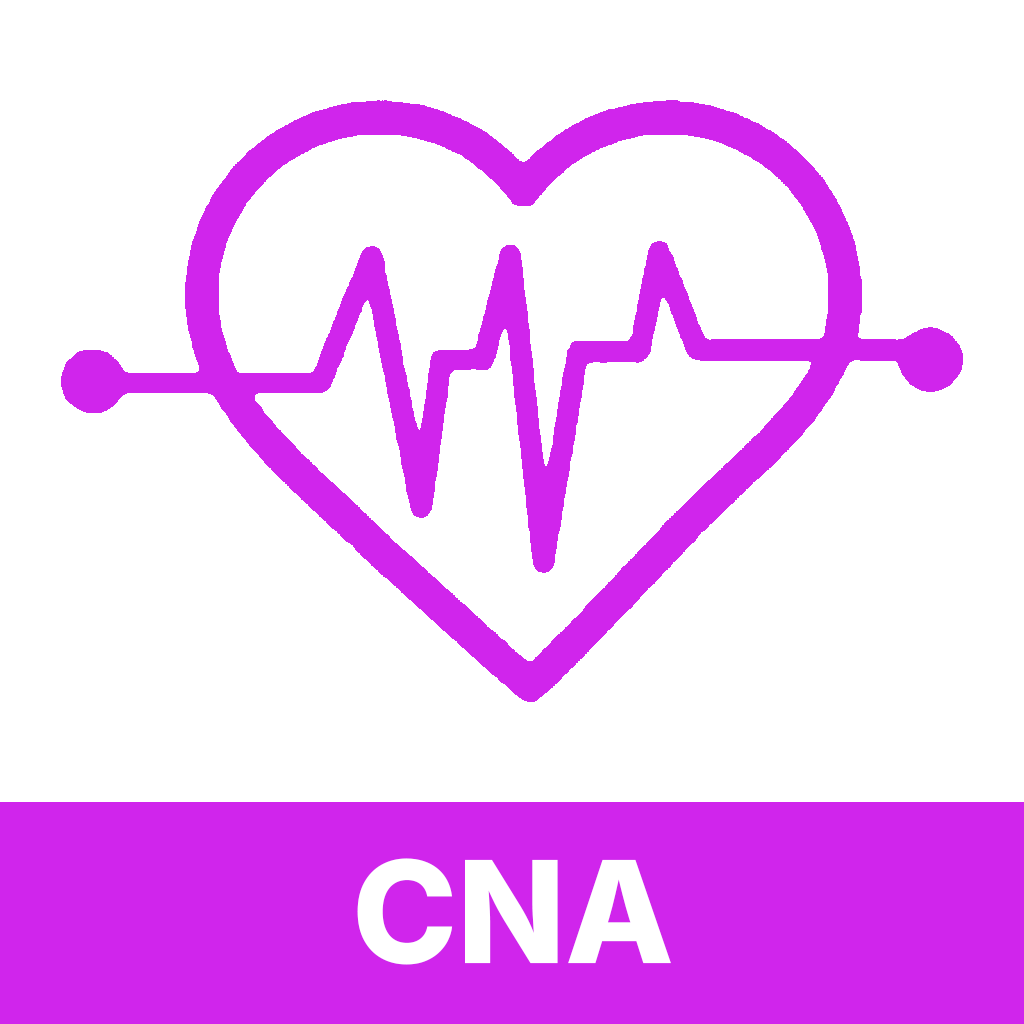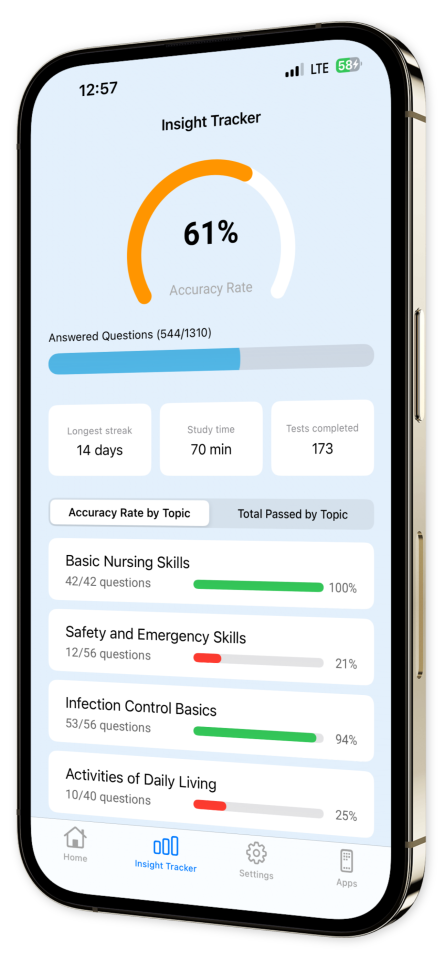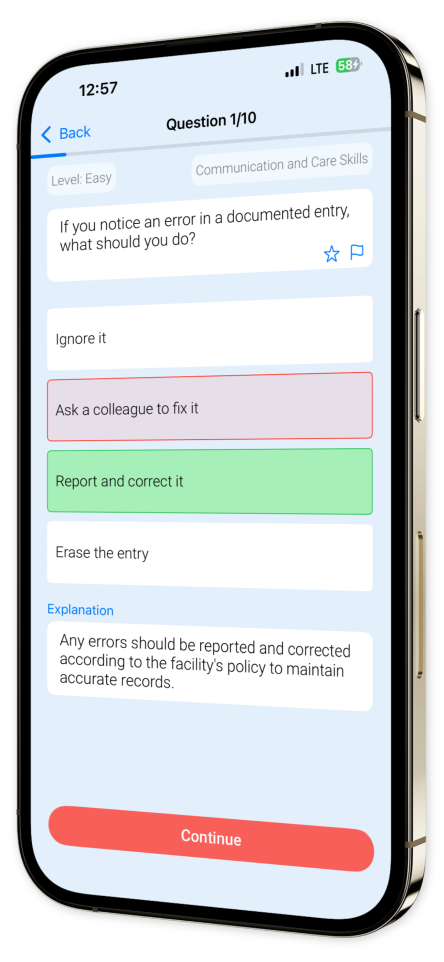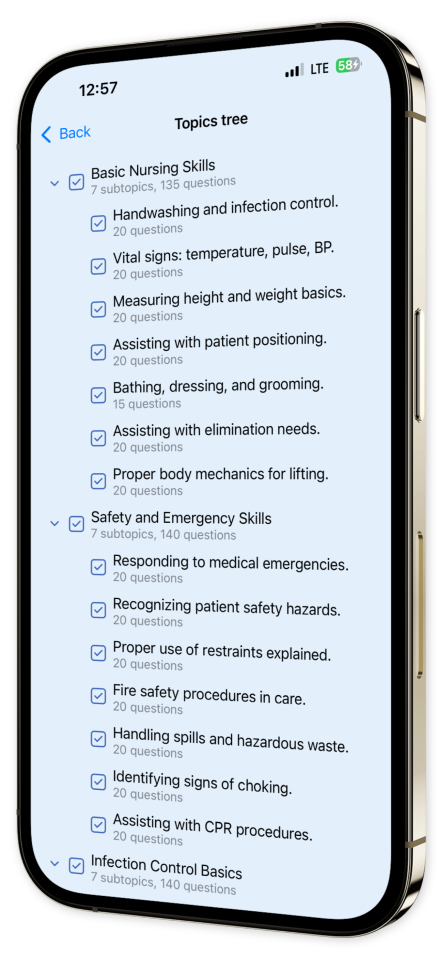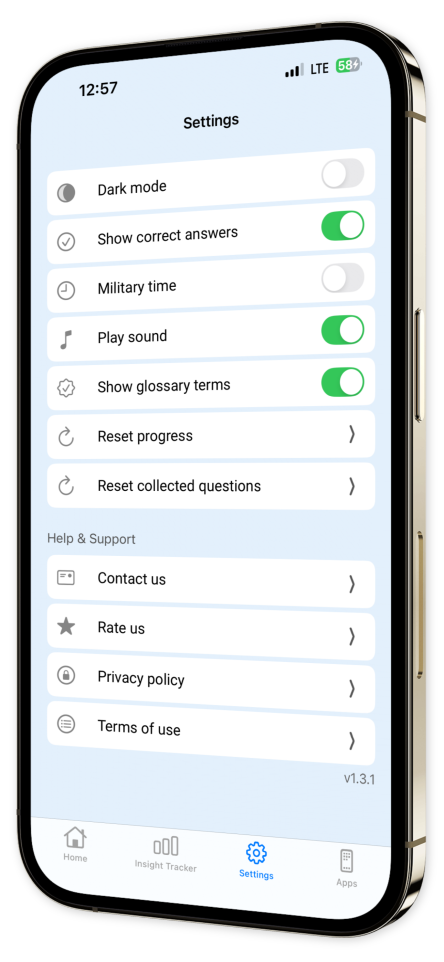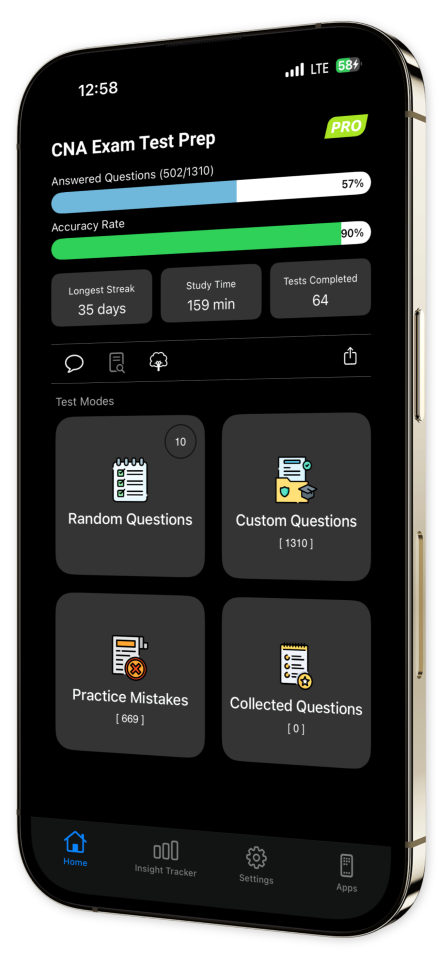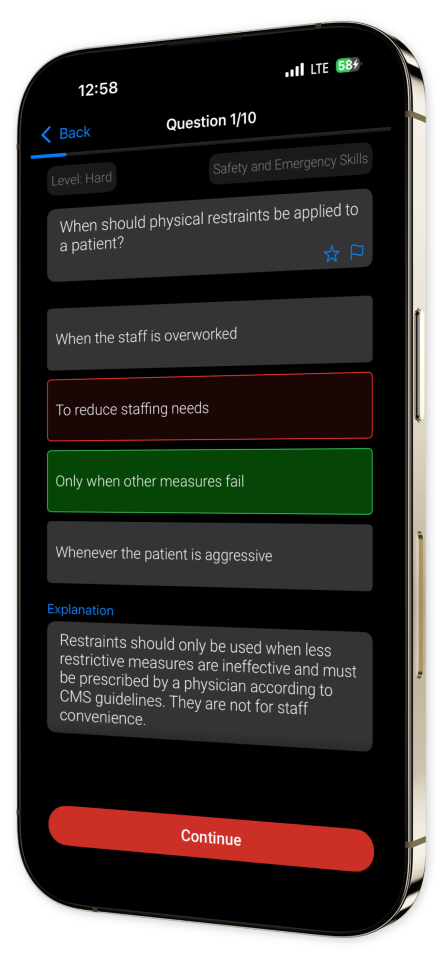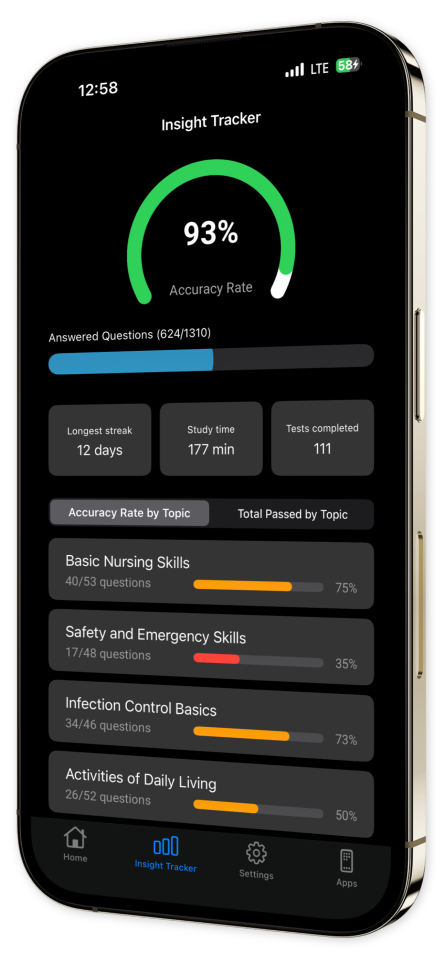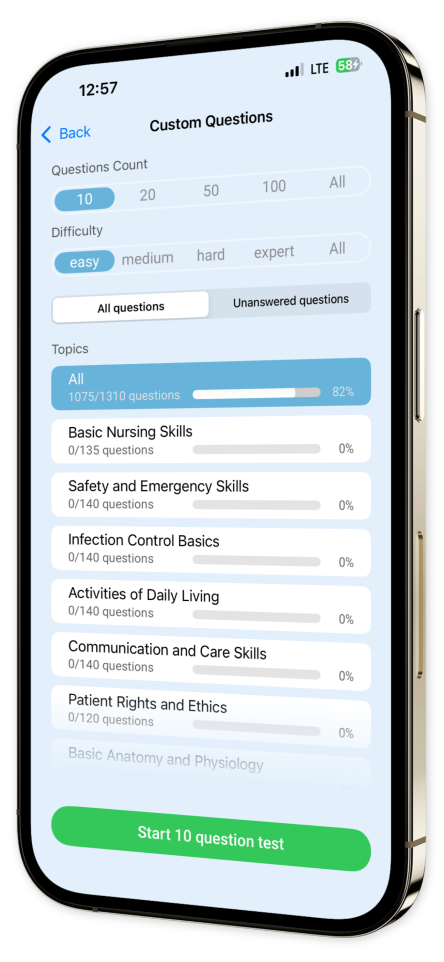

CNA Exam Test Prep iOS and Android App
Transform your CNA exam journey with CNA Exam Test Prep!
Our app is meticulously crafted to offer a dynamic and immersive test-taking experience, designed to ensure your success in becoming a Certified Nursing Assistant.
Dive into a rich pool of practice questions that intricately cover all the domains essential for CNA certification.
With each query detailed with in-depth explanations, enrich your understanding and enhance your competency.
Key Features:
Extensive Question Bank: Unlock a wide array of practice questions spanning critical CNA topics, ensuring comprehensive coverage.
In-Depth Explanations: Learn from each question with detailed rationales, bolstering your knowledge and recall.
Custom Test Creation: Tailor your quizzes by selecting specific areas and question types, honing in on your focus areas.
Progress Tracking: Monitor your advancements seamlessly with our user-friendly progress tracking capabilities.
Offline Access: Study whenever, wherever, without the confines of a web connection—ideal for flexible on-the-go learning.
User-Friendly Interface: Experience an intuitive and sleek design, ensuring your studies remain concentrated and effective.
Download CNA Exam Test Prep today and step confidently towards your future as a Certified Nursing Assistant!
Achieve mastery, gain insights, and excel with ease—your path to CNA success starts here.
Seize control of your study routine and embark on a smarter preparation journey.
Join the ranks of successful CNAs prepared with CNA Exam Test Prep!
Learn, succeed, and make a difference.
Content Overview
Explore a variety of topics covered in the app.
Example questions
Let's look at some sample questions
When should a nurse perform hand hygiene?
Before eatingAfter using the restroomBoth a and bOnly in the morning
Hand hygiene should be performed in multiple scenarios, including before eating and after using the restroom, to reduce the spread of infections.
A patient has a radial pulse of 75 bpm. Calculate their pulse pressure given a BP of 120/80 mmHg. Choose correct pulse pressure.
20 mmHg30 mmHg40 mmHg50 mmHg
Pulse pressure is calculated as systolic pressure minus diastolic pressure. Therefore, 120 - 80 = 40 mmHg. Verified with repeat calculations: 120 - 80 = 40.
During orthostatic BP check, lying BP is 140/90 mmHg, standing is 130/85 mmHg. What's change in systolic pressure?
0 mmHg5 mmHg10 mmHg15 mmHg
Change: Lying systolic 140 - standing systolic 130 = 10 mmHg. Verified: 140 - 130 = 10 mmHg.
How often should a bed-bound patient be repositioned?
Once dailyEvery 2 hoursEvery 8 hoursTwice daily
Reposition every 2 hours to prevent pressure sores, as recommended by standard care guidelines in nursing.
When logrolling a patient, ensure the spine remains:
Curved naturallyAligned with the shouldersIn a straight positionElevated above the heart
Logrolling maintains spinal alignment, crucial for avoiding spinal injury, especially with spinal surgeries or injuries. A straight spine prevents twisting.
Using a draw sheet to pull a patient up in bed, ensure to:
Lift with your backPull with a quick jerkCoordinate with another personSlide the patient alone
For safety and efficacy, coordinate movements with another person to evenly distribute weight and reduce injury risk when using a draw sheet.
When assisting a resident with bathing, what should a CNA do first?
Gather suppliesClean the bath areaExplain the processHelp resident undress
Before starting the bath, explaining the process ensures the resident is aware and comfortable with what to expect, promoting trust and cooperation.
Why should a CNA check the bedpan's contents before disposing of them?
To ensure the patient used it correctly.To determine the patient's hygiene level.To monitor the patient's output for abnormalities.To assess the patient's color preferences.
Monitoring the patient's output helps detect abnormalities such as blood in urine or changes in stool consistency that may indicate health issues.
A 75-year-old is on a bladder training program. Before assisting, you measure 480ml of urine. How long to wait if output goal is 500ml?
2 hours30 minutes1 hour15 minutes
To determine how long to wait, calculate urine production rate. If average urinary volume is 30ml/hour, 20ml will take roughly 1 hour.
Catheter care best practice for infection control involves?
Washing hands before and afterReusing catheterAlcohol cleaning dailyChanging bag weekly
Hand hygiene is critical to infection control surrounding catheter use, as consistent practice limits cross-contamination risks.
